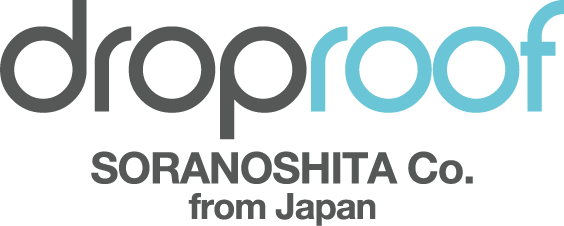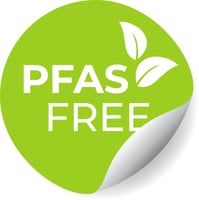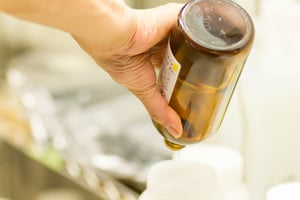Did you know that the water repellents used in outdoor clothing are changing now? Rain jackets that...
PFC-Free & PFAS-Free: Why Sustainable Consumers are Demanding Eco-Friendly Alternatives
In today's rapidly shifting consumer landscape, sustainability has become more than just a buzzword – it's a way of life. With increasing awareness about the environmental impact of various industries, particularly the textile industry, eco-conscious consumers are demanding more transparency and responsibility from brands. As a result, the rise of perfluorinated chemicals (PFC)-free alternatives has become a hot topic of conversation.
PFCs, commonly used in the production of water-resistant and stain-repellent textiles, have come under scrutiny due to their potential harm to human health and the environment. This has led to a growing movement towards PFC-free alternatives, as more and more consumers seek greener, safer options.
Sustainable brands are capitalizing on this trend by offering PFC-free products that not only align with customers' values but also deliver the performance and functionality they expect. From outdoor apparel to home furnishings, the demand for eco-friendly alternatives is reshaping the entire market.
In this article, we will dive into the reasons behind the rise of PFC-free options and explore why sustainable consumers are increasingly gravitating towards these alternatives. Join us as we uncover the driving forces behind this shift towards a more environmentally conscious future.
The importance of sustainability in consumer purchasing decisions
Consumers today are more concerned about the impact their purchases have on the environment. They want to align their values with the products they buy, and this includes the choices they make when it comes to textiles. Sustainable consumerism is on the rise, with people actively seeking out eco-friendly alternatives to traditional products.
For many consumers, the textile industry's impact on the environment is a major concern. The production and disposal of textiles can result in water pollution, chemical waste, and carbon emissions. By opting for sustainably produced items, consumers can make a positive impact and contribute to a healthier planet.
Understanding PFCs and their impact on the environment
Perfluorinated chemicals (PFCs) have long been used in the textile industry due to their water-resistant and stain-repellent properties. However, the widespread use of PFCs has led to concerns about their potential harm to human health and the environment.
PFCs are highly stable due to the strong bond between fluorine and carbon, and remain in the environment and are not easily decomposed. PFCs have been detected in water, soil, and other locations in very small quantities. In particular, high concentrations of PFC have been detected in the vicinity of factories that used to manufacture organofluorine compounds. It is especially important to note that PFCs are contained in drinking water, which we may be unknowingly ingesting.
The dangers of PFCs and their effects on human health
The potential dangers of PFCs to the human body cannot be overlooked. These chemicals have been linked to a variety of health problems, including developmental and reproductive issues, thyroid disease, and impaired immune function.
Studies have shown that PFCs accumulate in the body over time and lead to long-term health risks; the effects of PFC exposure are of particular concern for vulnerable populations such as pregnant women and children.
It is worth remembering that in recent years, PFOA, a substance that is part of PFCs, was classified as a carcinogen by the IARC.
The half-lives of PFOS and PFOA in human blood are said to be 5.4 and 3.8 years, respectively, which is far longer than the half-lives of other substances that are harmful to the human body. Once ingested, they accumulate in the kidneys and are not easily removed from the body.
They stay in the human body and environment for so long that they are ridiculed as Forever Chemicals.
However, it is a misconception that all PFCs are harmful
The explanation so far may have given the impression that all PFCs are harmful to the environment and human health, but this is a misconception. To be honest, we do not know much about most PFCs.
Research has been conducted on a small number of PFCs, including PFAS and PFOS, and it is now known that too much of them can be harmful to the human body, but we still do not know how small amounts can be harmful. We only know that too much is bad.
Among the more than 4,000 types of PFCs, PFAS and PFOS are similar in chemical formula, but their properties are different and their effects on the human body are also known to be different. These PFCs can be classified as having long carbon chains (called long chains), while others have short carbon chains (called short chains). While long chains are stable and are not easily decomposed in the environment, short chains are far more easily decomposed than long chains. Similarly, the tendency of accumulation in the human body is also low. In this regard, it is highly questionable whether all PFCs are harmful to the human body and the environment.
Is fluoride in toothpaste and pans safe?
Let's consider whether these are harmful to the fluoride around us.
First is the fluoride in toothpaste. These are called inorganic fluorines and have no carbon bonds. The PFCs we have described so far are called organic fluorine compounds, which have carbon and fluorine bonds, and are completely different. No one would consider salt and plastic bags to be the same thing, but you should not equate PFC with fluoride in toothpaste just because it is fluorinated.
So what about the fluorine that coats frying pans? This one has a history of using the same PFC as clothing. Maybe you have pans in your house that are coated with PFC. Should you quit using them immediately? The answer is no.
These are stable polymers, which I will write about in more detail elsewhere, and even if you swallow a small piece of the pan coating, it will not be absorbed, but will be expelled. It is important to note that there are some places, such as PFC manufacturing plants, where there is no exposure in general life, but it is a misconception to say that they are immediately dangerous. However, since this requires very specialized knowledge, we will limit ourselves to this level of explanation here.
What is C0 water repellent?
PFC-free water repellents are sometimes referred to as C0 water repellents. The exact meaning of C0 water repellency should be carbon-free, but most PFC-free water repellents do contain carbon. So why do we call them C0 water repellents?
Prior to 2015, C8 repellents, which have eight carbons in a row, were commonly used. These were regulated, and then C6 repellents with six carbons were used in very recent years, up to the year 2023-2024. These refer to the C and F, i.e., carbon and fluorine bonded together, and C0 water repellent refers to the fact that it no longer contains fluorine for convenience. While this term may be more familiar to outdoor enthusiasts, it is also academically incorrect; C0 water repellent conveys the message, but PFC-free water repellent is a more accurate description.
Government regulations and bans on PFCs
Growing concerns about the environmental and health effects of PFCs have prompted governments around the world to regulate or ban PFCs. For example, the European Union (EU) is moving to restrict the use of certain PFCs in consumer products, including textiles, in a regulation called REACH.
Such regulations and bans have increased demand for PFC-free alternatives; by offering PFC-free products, companies can not only meet regulatory requirements, but also establish themselves as leaders in sustainability. However, it is not a matter of simply replacing PFC-free products with PFC-free products, and a number of issues have arisen in changing the overwhelmingly superior performance of PFCs. These will be discussed later.
Environmentally Friendly Alternatives to PFC, Benefits of PFC-Free
The search for environmentally friendly alternatives to PFCs has led to significant advances in textile technology. Brands are now developing innovative solutions to achieve water repellency and stain resistance without the use of harmful chemicals.
One example is the use of plant-based coatings such as waxes and plant oils to provide water repellency. These coatings are biodegradable and do not pose environmental or health risks like PFCs. Other alternatives include recycled materials that reduce the need for new resource extraction and innovative fabric structures that naturally repel water.
Disadvantages of PFC-free
While PFC-free has become an environmentally friendly substance, it has lost one thing: its water repellency. PFC is highly stable due to the strong bond between carbon and fluorine, and has high water repellency and a long life. Many people may be dissatisfied with its longevity in particular.
At the same time, it loses its oil-repelling performance, i.e., oil repellency.
In the case of surface treatment without PFC, it is quite difficult to add oil repellency due to its chemical properties.
Originally, even with PFC water repellent, the water repellent performance was reduced by the abrasion of the fabric through use. Therefore, some people may have already been dissatisfied with the loss of water repellent performance in expensive garments such as Gore-Tex clothing. Unfortunately, these are more accelerated by the use of PFC-free water repellents.
So what should we do? We need to do more regular maintenance and keep our garments in good condition. Jacket such as Gore-Tex can only take advantage of its breathability if its water repellency is effective. Rain jacket that has lost its water repellency is no better than an unbreathable vinyl kappa, even if it is made of Gore-Tex.
Regular laundering is necessary, and laundering alone is not sufficient to restore water repellency. PFC-free means that now more than ever, we have to pay attention to the maintenance of our garments. We now have to pay more attention to maintenance.
Case studies of successful brands embracing PFC-free alternatives
Several brands have already embraced PFC-free alternatives and are reaping the rewards. Patagonia, a well-known outdoor apparel brand, has been a leader in sustainability for years. They have successfully developed PFC-free alternatives for their water-resistant garments, without compromising performance.
Another example is IKEA, the Swedish furniture giant, which has committed to phasing out harmful chemicals, including PFCs, from its products. By offering PFC-free options, IKEA is not only meeting the demands of sustainable consumers but also setting an example for the industry as a whole.
Conclusion: The future of sustainable consumerism and the role of PFC-free alternatives
As sustainable consumerism continues to gain momentum, the demand for PFC-free alternatives will only increase. Consumers are becoming more conscious of the impact their purchases have on the environment and are actively seeking out eco-friendly options.
The rise of PFC-free alternatives is not just a trend; it's a reflection of a larger shift towards a more sustainable future. By embracing PFC-free products, brands can not only meet the demands of sustainable consumers but also contribute to a healthier planet for future generations. As the textile industry continues to evolve, it is crucial for businesses to adapt and innovate, ensuring that sustainability remains at the forefront of their strategies.



